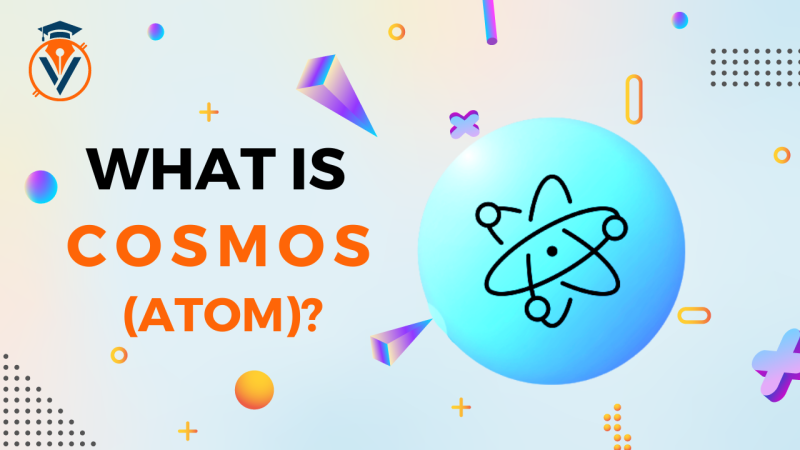What is it? What is the different between Web2.0?
There is no single and precise definition of Web 3.0 on the Internet. In order to understand the concept of Web 3.0, we first need to understand what Web 1.0 and Web 2.0 are. If we turn to history, the concept of Web 2.0 appeared earlier than Web 1.0. Therefore, everything that happened to the Internet before Web 2.0 is called Web 1.0.
In the period from 1991 to 2004, the Internet was a cluster of static websites-pages with information uploaded to them. The user could read articles, download files, view news, download their favorite songs and movies. All sites and pages were created by some specific people and programmers. And administrators only had access to sites. All data was stored centrally on servers, which allowed the owners to fully control the content posted on the sites, censor anything, add and remove anything they wanted.
Web 1.0
Web 1.0 was also called Read-Only. There were no logins, authorizations and edits. The users had no interaction with the sites other than reading.
Roughly speaking, the early Internet was like a huge library, where users could only take the book they had, without feedback.
However, there were exceptions. In 1995, Amazon appeared on the Internet. The website allowed its users to leave reviews, comments and user manuals.
Initially, the Internet system was chaotic and unstable, due to the fact that it worked through modems and telephone networks. The problem was solved after the appearance of dedicated lines and Internet service providers. After that, the idea of the Internet met with a number of problems. People had too high expectations against the background of euphoria from the opportunities that this project could provide in the future.
Every day new startups appeared, the prospect of some was even overestimated. The industry was young and most entrepreneurs did not understand how to work with an unfamiliar field. A lot of funds were poured into the industry, after which investors realized that the projects were not profitable. In the early 2000s, many companies went bankrupt, and those who were able to hold out during that difficult time eventually became IT giants (for example, eBay, Amazon).
Web 2.0
The second period of the Internet begins its history with the publication of Tim O'Reilly's "What is Web2.0?". The article was published on 30.09.2005. There, the author connects the appearance of a new type of sites, united by common features, with the general trend of change in the Internet community. Like Web 1.0, Web 2.0 also does not have a clear definition and date of appearance (in the case of Web 2.0, it is difficult even to specify the exact year).
The main difference between Web1.0 and Web2.0 is the emergence of social networks. They allowed ordinary web users to post content, share photos, make search queries and share personal information. All this has led to a sharp popularization of the Internet.
The key platforms of the era were:
- YouTube
- Facebook.
Social networks have given a huge boost to the development of mobile devices, applications, and online platforms. Large Internet service providers began to appear, which improved the quality and speed of the network, while charging an affordable fee for their services to users. All this began to bring huge income and led the Internet to complete centralization.
People began to communicate, make purchases, enter private information and card data, make millions of requests to Google. Platforms have begun to collect this information, analyze it and give the user exactly the content that will be interesting to him. This will prolong the time a person is on the site, which will allow the company to earn even more money.
After a while, firms realized that they could collect information about you and sell it to private advertising companies such as Google Ads. Those, in turn, set up targeted advertising. That is why for several days you will see an advertisement for cat food, if you ask once or twice in a search engine about the nature of a particular breed of cat.
So we smoothly approached the disadvantages of Web 2.0.
The disadvantages of Web 2.0:
1. Centralization.
All user data is stored on shared servers, which makes them a tasty morsel for scammers. For example, over the past two years, articles about the leakage of Facebook user data have been very often featured in the news. Facebook's frequent data theft became the main argument of financial regulators who opposed the launch of the Facebook Libra crypto project (now it is Diem).
Data theft is not the only disadvantage of centralized data. A failure of one server can lead to the collapse of other, related services. For example, an Amazon outage that occurred in November 20 led to incorrect operation of services ranging from Pokemon Go and League is Legends to Tribune Publishing and Baltimore Sun.
2. Censorship and content placement policy.
In view of the centralization of the Internet, the owners of social networks can delete objectionable content, thereby promoting an up-to-date and convenient agenda to the masses. Now you will not surprise anyone that for a "wrong" opinion about vaccination against Covid or an intolerant statement towards minorities, you can easily get "banned" or even lose your page forever.
3. Lack of confidentiality.
As mentioned above, the services we use collect absolutely all information about us, starting with search engine queries, ending with phrases that we say to the interlocutor. All this data is systematized and used for targeted advertising or sale to third parties.
Therefore, the era of Web 2.0 can be safely called the era of targeted advertising and lack of privacy.
All this has pushed people to create Web 3.0. Recall that there is no clear concept of the third era of the Internet yet. What can be said for sure is that the system will be completely decentralized. That is, all information will be stored not on controlled servers, but on separate nodes (nodes) that will be stored on the devices of the users themselves.
Unfortunately, the project is still at too early a stage, so it is not known on which blockchain or blockchains the system will be located, how it will interact with the world and man, etc. It is worth taking into account that Web 3.0 goes far beyond the Internet and fully penetrates into the real world. It will change the banking system, the principles of relationships between people and form new rules for companies.
Consider the advantages of Web3.0, in addition to decentralization:
1. DApp
We can explain the principle of operation of decentralized applications using the example of Instagram. If you post any content on Instagram, which is later deleted for violating the terms of use (or errors), then there is practically no chance to restore it. In decentralized applications, all data is stored on all devices at once and no one digging can control the content. Therefore, you will not encounter an erroneous deletion.
2. Copyright protection
The published content is marked as unique. This will allow you to avoid multiple copies, find the original source and save time on searching for the original. It will become easier for content authors to earn money from their work. The reward will be awarded not only for downloading, but also for viewing and reading content. At the same time, the system does not request personal data, which gives complete anonymity.
3. Increased network speed
A distributed network system will allow users to share the power of their devices with each other.
4. More freedom, less censorship
With the introduction of a decentralized system, there is no risk of getting banned for expressing an unpopular opinion.
Problems and difficulties on the way to becoming Web 3.0
Let's start with the fact that Web 3.0 is a completely new look at the Internet. It will take people years to fully switch to it. A complete revision of the WWW data transmission protocols will also be required.
Web 2.0, on which the entire world economy is tied, will not be able to give way so easily to Web 3.0. Therefore, most likely the transition will occur after a complete symbiosis of the two systems (which is already happening).
To switch to Web 3.0, all users will have to switch to crypto services. Get cryptographic keys, install DApps applications, figure out how everything works, etc. Therefore, it is possible that there will be a high percentage of those who choose not to "bother" and will remain until the last with the usual Web 2.0.


